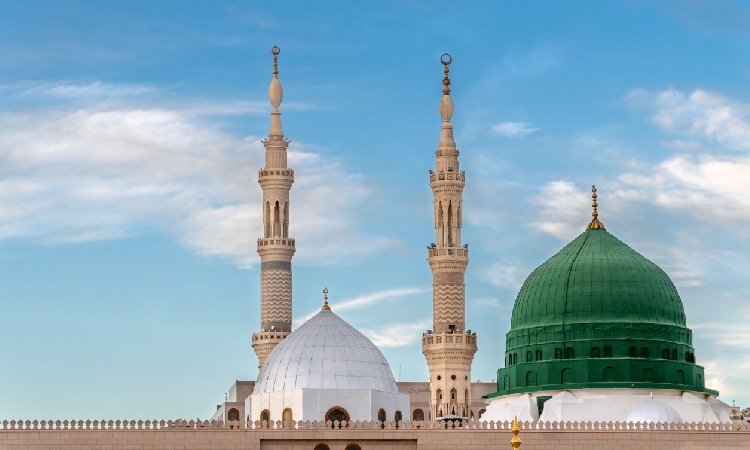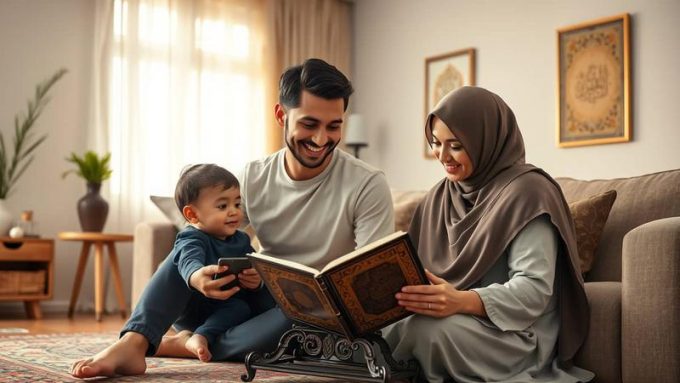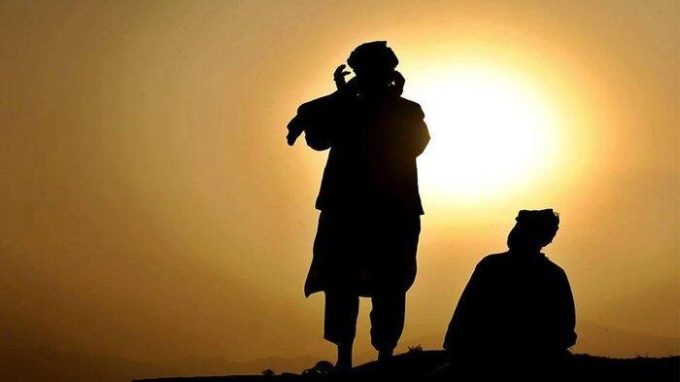1. Beginning of the Hijrah and the Importance of Mosque Construction
When Rasulullah SAW and his Muhajirin friends arrived in Medina in 622 AD, one of the Prophet’s main priorities was to build a mosque. Mosques are not only places of worship, but also centers of social, political and educational activities for Muslims. Rasulullah chose a location on land belonging to two orphans, Sahl and Suhail. With wisdom, the Prophet bought the land at a fair price, demonstrating the principle of justice which is the basis of Islamic law. The construction of the Nabawi Mosque was the Prophet’s first step in building Islamic civilization in Medina.
2. Mutual Cooperation in the Construction of the Nabawi Mosque
The process of building this mosque was carried out in mutual cooperation by the Muhajirin and Ansar. Rasulullah SAW himself helped lift bricks, collect wood and stir up mud. The Prophet’s attitude in working with his people created a spirit of brotherhood and togetherness among his friends. In this process, the Prophet often prayed, “O Allah, there is no life except the afterlife. So forgive the Muhajirin and Ansar.” These words became the motivation that fueled the enthusiasm of Muslims to complete the construction of the mosque.
3. Simple Design, Deep Meaning
The Nabawi Mosque was originally very simple. The walls are made of mud bricks, the pillars are made of date palm stems, and the roof is made of date palm fronds. The floor is just sand and gravel. On the other hand, this mosque was designed with a broad vision. The Nabawi Mosque not only functions as a place of worship, but also as a place to gather, discuss and study. The simplicity of this building depicts a spiritual value that is more prominent than the physical aspect.
4. Ahlu Suffah: Corner of the Mosque for Fighters
In one corner of the Nabawi Mosque, the Prophet provided a special place for the Muhajirin who did not have a place to live, known as Ahlu Suffah. They lived in the mosque and received direct guidance from the Prophet. Ahlu Suffah became the forerunner of the preachers who would later spread the teachings of Islam to various corners of the world. The Prophet often paid attention to them by sharing food and knowledge, showing concern for fellow people in need.
5. Mosque as the Center of Islamic Life
The Prophet’s Mosque plays a central role in the life of Muslims. In addition to being a place for congregational prayer, this mosque is where the Prophet Muhammad decided on the affairs of the people, received delegations from various tribes, and discussed strategies for preaching and defending Islam. This mosque also functioned as the first Islamic school, where the Prophet Muhammad taught the Qur’an ‘an and sunnah to the companions. With this multifunctional role, the Prophet’s Mosque becomes a symbol of integration between spiritual and social aspects in Muslim life.
6. First Expansion in the Time of the Prophet
Over time, the number of Muslims in Medina increased. The Prophet’s Mosque is no longer able to accommodate the overflowing congregation, especially during Friday prayers. In the 7th year of Hijriah, after the victory in the Battle of Khaibar, the Prophet decided to expand the mosque. The size was enlarged to 50 x 50 meters, and although it was larger, the design remained simple. Date palm fronds and tree trunks were still used as the main materials, reflecting the spirit of simplicity and togetherness.
7. Transformation during the Caliphate of Umar bin Khattab
After the death of the Prophet Muhammad SAW, the need for The expansion of the Prophet’s Mosque continued to increase. Caliph Umar bin Khattab RA led a major expansion in 17 Hijriah. He added to the area of the mosque, replaced the mud walls with stronger bricks, and reinforced the roof with more durable wood. This step reflects the seriousness of the leaders Islam in preserving and developing the legacy of the Prophet.
8. Major Renovation during the Caliphate of Uthman bin Affan
During the reign of Caliph Uthman bin Affan RA, the mosque was again significantly renovated. Its size was expanded, the wooden pillars were replaced with carved stone, and the roof used wood that stronger. This renovation gives the Prophet’s Mosque a more magnificent appearance, while maintaining its essence as a spiritual center for Muslims. This change also reflects the progress of Islamic civilization at that time.
9. Changes in the Modern Era
The Prophet’s Mosque continues to grow along with the increasing number of worshipers from all over the world. In the modern era, especially under the rule of the Kingdom of Saudi Arabia, the Prophet’s Mosque underwent major renovations. The area was enlarged to cover hundreds of thousands of square meters, able to accommodate millions of worshipers at once. Modern technology was applied, such as air conditioning, automatic umbrellas, and sophisticated sound systems, without eliminating the historical value of this mosque. Although the building is increasingly magnificent, the spirit of simplicity inherited from the Prophet remains the core of the Prophet’s Mosque.
10. Inspiration from the Prophet’s Mosque for Muslims
The Prophet’s Mosque is not only a building, but also a symbol of struggle, unity, and the rise of Islamic civilization. It was from this mosque that Islamic teachings spread throughout the world. The simplicity of its construction teaches the importance of sincerity and cooperation in achieving great goals. Until now, the Prophet’s Mosque remains a holy place that is longed for by Muslims from all over the world, inspiring them to make the mosque the center of spiritual and social life.








Leave a comment